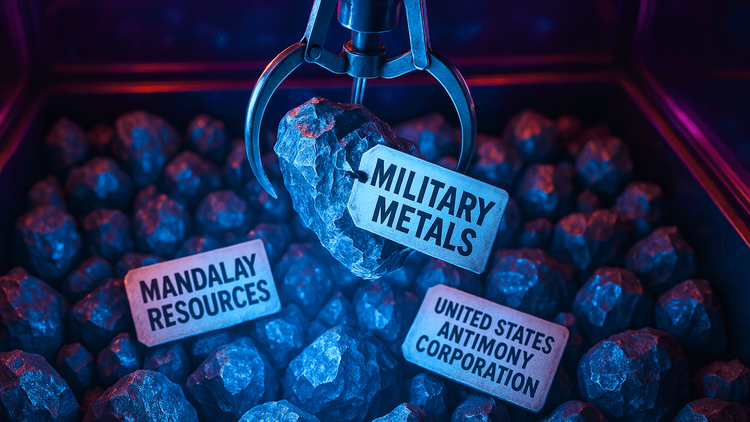Canada’s Critical Minerals Strategy: $43.5M Investment Fuels Quebec’s Mining Growth
Canada Invests $43.5M in Quebec’s Critical Minerals Sector to Secure Jobs, Strengthen Supply Chains, and Lead the Global Energy Transition

Canada is making a strategic move to secure its place in the global critical minerals market. With a major investment of up to $43.5 million, the federal government is reinforcing Quebec’s mining sector, creating new job opportunities, and ensuring the country remains a reliable supplier of essential minerals. This initiative, announced by the Honourable Jonathan Wilkinson, Minister of Energy and Natural Resources, aims to drive research and infrastructure development to strengthen Canada’s economic future.
Strategic Investments in Quebec’s Mining Sector
The bulk of this funding—up to $39.8 million—is being allocated through the Critical Minerals Infrastructure Fund (CMIF) to finance six key energy and transportation projects that will support mining operations and enhance supply chain resilience. Among these projects, Critical Elements Lithium Corporation is set to receive up to $20 million to build a new electrical station and relocate power transmission lines to support its Rose Lithium-Tantalum Mining Project in Eeyou Istchee James Bay.
Dumont Nickel has been granted $1.1 million to conduct a feasibility study on linking its nickel and cobalt project to the Hydro-Québec grid. This connection will play a crucial role in ensuring the long-term sustainability of the project. Sayona Nord Inc. will receive $1.3 million to develop a 55-kilometre transmission line that will provide electricity to the Moblan lithium project, also located in Eeyou Istchee James Bay.
Eskan Company, an Indigenous-owned firm, is being supported with up to $13.5 million to conduct a feasibility study for the extension of the Renard Mine access road by 87 kilometres. This initiative aims to improve transportation infrastructure for lithium mining projects in the region. Additionally, Cbay Minerals Inc. will receive $1.3 million to complete a feasibility study and environmental impact assessment for the development of two-lane gravel roads and electrical power lines linking its Corner Bay and Devlin deposits.
Commerce Resources is also set to benefit from this funding, securing up to $2.6 million to evaluate the feasibility of a new road network connecting the Ashram rare earths and fluorspar project. This infrastructure development is expected to boost production while strengthening Canada’s supply of rare earth elements.
Driving Innovation Through Research and Development
In addition to these infrastructure investments, the Critical Minerals Research, Development and Demonstration (CMRDD) program is allocating $3.7 million to COALIA, a project designed to refine lithium extraction and purification techniques. The initiative focuses on using nitric acid to extract lithium from spodumene ore, allowing for the recovery of valuable byproducts that can be repurposed as nitrogen fertilizers. This approach not only enhances the efficiency of lithium processing but also minimizes waste, reinforcing Canada’s commitment to sustainable resource development.
Quebec and Canada: Partners in Growth
This funding underscores the strengthened collaboration between the federal and Quebec governments, which is essential for positioning Canada as a dominant force in the global critical minerals industry. The Quebec-Canada Collaboration Table on Energy and Resources, launched earlier this year, serves as the foundation for these joint efforts. By working together, both governments are securing economic growth, technological advancements, and energy independence.
Quebec plays a central role in Canada’s critical minerals strategy, given its vast reserves of lithium, nickel, and rare earth elements. As demand for these materials surges worldwide, investments in mining, processing, and infrastructure are crucial to ensuring a reliable and sustainable supply chain. These efforts will not only benefit the mining sector but also support industries such as electric vehicle manufacturing, renewable energy, aerospace, and defense.
Seizing the Global Opportunity
The investment in Quebec’s critical minerals sector is more than just a funding announcement; it represents a major step toward solidifying Canada’s role in the global energy transition. With geopolitical tensions and supply chain disruptions affecting access to key minerals, countries around the world are seeking stable, ethical sources of lithium, nickel, and rare earth elements. By reducing its reliance on foreign suppliers, particularly China, Canada is positioning itself as a leader in sustainable resource development.
These projects also mark a shift toward economic resilience. By supporting domestic mining operations and infrastructure, the government is ensuring long-term job creation and regional economic development. For Indigenous communities and local businesses, these initiatives provide new opportunities to participate in the critical minerals economy, fostering economic growth and reconciliation.
A Pathway to a Greener Future
Beyond economic benefits, these investments align with Canada’s climate goals by promoting sustainable mining practices and clean energy integration. The transition to a low-carbon economy depends on reliable access to critical minerals, which are essential for battery production, renewable energy storage, and electric vehicle manufacturing. Through initiatives like the CMIF and CMRDD, Canada is demonstrating its commitment to environmental responsibility while maintaining a competitive edge in the global market.
The Honourable Anita Anand, President of the Treasury Board and Minister of Transport of Canada, emphasized that strengthening supply chains and investing in key infrastructure will create good jobs while supporting economic growth. Similarly, François-Philippe Champagne, Minister of Innovation, Science, and Industry, highlighted that these initiatives accelerate Canada’s transition to a sustainable, low-carbon economy, securing long-term economic opportunities for future generations.
Conclusion
Canada’s investment in Quebec’s critical minerals sector is a decisive step toward securing the country’s economic future. These funding initiatives will accelerate the development of key infrastructure, create jobs, and reinforce Canada’s role as a leading supplier of essential minerals. As the global demand for lithium, nickel, and rare earth elements continues to rise, this strategic investment will ensure Canada remains at the forefront of the energy transition.
With a strong partnership between the federal and Quebec governments, these projects will drive sustainable growth, enhance energy security, and position Canada as a reliable, responsible player in the global critical minerals industry. The message is clear—Canada is ready to lead in the resource-driven economy of the 21st century.






